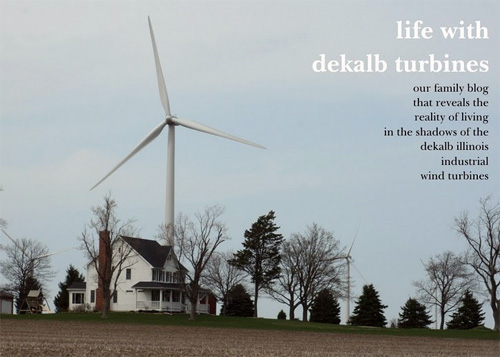You’re wondering what it’s like living next to wind turbines? (United Kingdom)
The following was written by nurse-midwife Jane Davis (Lincolnshire, UK) to a woman in Australia inquiring about life next to a windplant—Editor.
How far should turbines be from one’s home? How far away is a bit like a piece of string, but at least 1.5 miles (2km) , although I do know of some victims in valleys with a windfarm 10 miles away that have problems. As with many things, it’s all down to size and location.
Our rented house is 5 miles away and we are noise and symptom free at night anyway. For Julian, my husband, who still has to farm the arable land on our farm, there is still daily exposure, so some symptoms persist and there does seem to be a dose response mechanism at play, too. So 7 hours downwind is OK, and 10 hours not.













